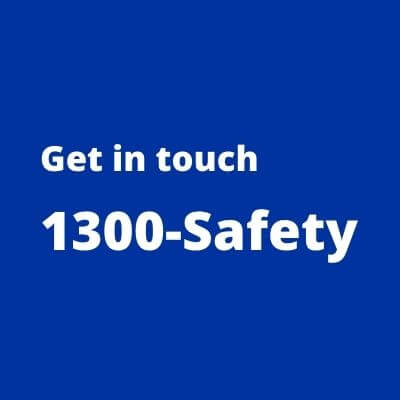Home » Occupational Hygiene » Vibration Assessment
Vibration Assessment
HSE Australia’s occupational hygiene specialists conduct comprehensive vibration assessments to ensure minimal employee exposure. Get in touch to arrange a vibration assessment of your workplace.
Vibration is an occupational health hazard that can cause various health problems, from minor annoyances to severe and long-term damage.
Contact us to arrange your vibration asessement
Our services include:
During a vibration assessment our Occupational Hygiene Speciailist are monitoring personal exposure levels of your workers.
Our technicians are using wireless whole-body & hand-arm vibration exposure meter (Dosimeters) to determin exposure levels.
The data collected with our Vibration Dosimeter & Analyser will be analysed to develop a detailed report and expert recomendations.
Request a Quote
Please provide us with some details.
Read the Article:
An overlooked health hazard: Vibration
Our Occupational Hygiene team around Dr. Michael Tkaczuk has put together a detailed article about vibration at the workplace. Please have a look and if you are concerned about vibration at your workplace please get in touch.

Occupational Vibration Risk Assessment
Vibration is mechanical energy that travels through the air or any other medium. It is caused by a moving object and can be transmitted through solid material such as floors, walls and seats or liquids, like water.
There are various sources of vibration in workplaces. Vibration can result from using vehicles, machinery, tools and equipment such as pneumatic drills and jackhammers.
Vibration is an occupational health hazard that can cause various health problems, from minor annoyances to severe and long-term damage. Vibration exposure is one of the most overlooked occupational health hazards in Australia.
What are the types of vibration in a workplace?
There are three types of vibration workers can be exposed to:
Vibrations transmitted to a large portion of the body while immersed in water or sound travelling through the air,
vibrations transmitted across the whole body (WBV) or vibrations restricted to specific body parts, such as the head or hands and arms (HAV).
Whole body vibrations or hand-arm vibrations are generally classified as occupational hazards. WBV are experienced through a surface that supports a person, such as a seat or a floor. The possibility of increased WBV injuries occurs when driving on uneven surfaces, unsealed roads or in poorly maintained vehicles.
Hand-arm vibrations are encountered through the use of power tools or vibrating plant. HAV injuries can occur due to poorly maintained tools, extended periods of use of vibrating equipment or poor technique by the operator.
Each type of vibration can have different effects on workers, depending on the intensity and frequency. For example, mechanical vibration can cause fatigue and discomfort, while acoustic vibration can cause hearing loss (see Noise Survey, Mapping & Noise Monitoring).
Vibration injuries can include musculoskeletal disorders, circulatory problems and nervous system disorders.
Industries where workers are most commonly exposed to vibration include:
- Transport & Logostics
- Construction & Building
- Agriculture & Farming
- Mining & Quarrying
Vibration control measures in the workplace
PCBUs and officers such as company directors are primarily responsible for ensuring the workplace complies with WHS regulations. Manufacturers and suppliers are responsible, as far as practical, for ensuring equipment is fit for purpose and safe, and employees must take reasonable care and comply with workplace safety procedures. PCBUs can mitigate vibration exposure by implementing measures such as:
Personal Protection Equipment (PPE)
Use of anti-vibration gloves and pads and appropriate hearing protection equipment (HPE).
Vibration-damping materials
Individuals should be provided with vibration-damping materials to help reduce the amount of vibration transmitted through the body.
Vibration-damping clothing
Employees in a high-vibration environment require vibration-damping clothing designed to help protect the body from the effects of vibration.
Regular breaks
Workers exposed to vibration for extended periods should take frequent breaks to give their body a chance to recover.
Up-to-date maintenance
Vibration emitting equipment should be regularly maintained or replaced if faulty.
Adequate training
Employees should have procedural and safety training when using vibrating tools and equipment.
Workplace Vibration Assessment
During a workplace vibration risk assessment, it’s important to identify the type of vibration present. An Occupational Hygienist will do this through visual inspection, measurement tools, and questionnaires.
Once they identify the vibration source and type, they will assess the intensity and frequency to determine if it’s likely to cause workers any adverse health effects.
HSE Australia’s qualified Occupational Hygienists can conduct a vibration risk assessment which involves:
- observation of workplace practices
- inspection of machines and plant
- monitoring vibration output
- assessing workplace procedures and training manuals
- talking with employees and observing equipment use
- ensuring correct PPE use
- reviewing control measures
We will then assess the likelihood of vibration injury and recommend steps to reduce or eliminate worker harm through vibration exposure.
Hole Body & Hand-Arm Vibration Risk Assessment
HSE Australia offers a wide range of Occupational Hygiene and Risk Management Services in the area of workplace vibration assessments. Contact us for an individual quote.
Request a call back
Solving problems others find difficult...for clients in

Frequently asked Questions
Health Safety Environment Australia
Why is vibration a work health hazard?
Vibration is a work health hazard as excessive exposure can damage nerves, blood vessels, muscles, bones and joints.
What are the most common sources of vibration at work?
There are several causes of vibration, including: Mechanical vibration – caused by contact between two objects or surfaces Structural vibration – caused by movement or oscillation within a structure Acoustic vibration – caused by sound waves It is important to determine the cause of the vibration before developing an approach or process to minimise exposure.
Which regulations cover vibration at work?
Vibration as a hazard is covered under the OHS Act and in Part 3.1 (Hazardous Manual Handling) of the Occupational Health and Safety Regulations 2017. AS 2670.1- 2001 - Evaluation of human exposure to whole-body vibration covers the assessment and evaluation of whole-body vibration. No Australian jurisdiction has specific vibration regulations; however, Safe Work Australia has published some information sheets.
How to reduce or avoid vibration at work?
- Use lower-impact equipment where possible
- Perform regular safety checks and maintenance of equipment
- Restrict employee exposure time
- Provide workers with correct PPE
- Ensure employees are adequately trained
- Conduct periodic employee health checks
What is a Vibration Assessment?
A vibration assessment is the most effective way to detect and monitor vibration in your workplace. Calculating and determining vibration levels and exposure can be complex, so we recommend assessment by a qualified occupational hygiene specilist. HSE Australia's specialists will monitor, calculate and assess the vibration output your employees may be exposed to. We will then recommend appropriate remediation if required.
One Source Many Solutions
Over the past 15 years we developed the ability to quickly understand and respond to our clients’ needs. We are “solving problems others find difficult…”.
We offer our clients an enviable team of specialists working with associates and other external experts, driving and delivering fit for purpose, tailored single sourced solutions for you.








